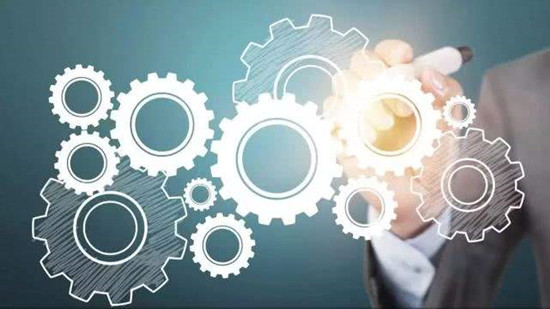Lithium-Ion Battery Assembly Understanding
Jul 27, 2019 Pageview:1280
Lithium polymer metal or the compound is also identified as the "lithium auxiliary batteries" represent rechargeable. Their cells get the anode of cation and the cathode consisting the unit substance which is able to receive and release metal ions repeatedly that is for recharging and rapidly that is for high current such as lithium manganese oxide.
The non-aqueous electrolyte, primarily consisted o\f a combination of organic carbonates, is used for charging or discharging. The lithium battery requires the exchange of metal ion between the electrolytes. Normal cell production voltage equal between the 3 and 4.2 volts depending mainly on the materials used to create this cathode.
Lithium Ion Battery Assembly Process:
Li-ion battery engineering actually had the portable electronics off the surface. It has much higher life concentration than the old battery technologies like the metal cadmium battery, and the metal primarily used is Nickel, that is the nickel-cadmium battery or the NiCad battery. Lithium-ion batteries are excellent choices for solar power systems.
You can use the safe depth of discharge up to 100% while they have nearly 99%efficiency. Many of the lithium-ion batteries offer a cycle life north of 10,000 cycles that means about 80% depth of discharge. The cycle lifetimes of lithium-ion batteries depend on some factors like temperature, charge and discharge current, charge, and discharge cut-off voltage.
Under the standard conditions, and when discharge cycles are done from the fully charged condition than it is about to 80%DOD. Lithium battery has cycle life about 1200-1500 cycles, as against of 400-600 maximum for a lead-acid battery. By lowering the depth of discharge, the life cycles of the battery can be extended, and further increases by maintain the optimum temperature.
Features Of lithium-ion batteries:
The features of such batteries are may be:
The most common features of the lithium-ion batteries include is that Prismatic and cylindrical forms.
A flat discharge kind of voltage to allow stable power production in the production phase
They do not have any kind of memory effect, thereby provide complete charge for each cycle can handle 500 cycles and sometimes more.
They have high capacity, lightweight, high density in terms of energy.
The lithium-ion battery manufacturing equipment market experiences significant growth due to the rise in its demand. Developments in battery technology driven by advancements in consumer electronics and automotive segments fuel the demand for lithium-ion batteries. The availability of standardized and specialized equipment in the sector aims to improve industry participation and increase demand for the manufacturing equipment.
The Equipment type witnesses growth in cell & battery manufacturing assembly technologies.
The cell & battery assembly segment holds the largest market share in the equipment types available to manufacture lithium-ion batteries. The electrode manufacturing process is heavily specialized and is often conducted by several outsourced players.
The assembly equipment has witnessed substantial growth in automation, including end-to-end process solutions. Companies are providing varying degrees of automation across different functions. There are certain aspects of production that require human intervention to an extent intending to minimize incidents such as dismemberment and accidental fires. This leads to an improvement in production efficiency, which is a crucial factor to develop automated machinery.
A Lithium-Ion battery pack manufacturer can help you in developing the most suitable package for you. Usually, such companies complete assembly with suitable protection devices or even offer smart pack solutions when there is a need for an advance on functionality. Usually, the custom lithium-ion battery pack manufacturer provides a sharing solution that is custom made to meet expectations. They may also provide you with a charger from what they already have in stock.
lithium-ion battery Assembly Plants:
The lithium-ion battery has two electrodes that are cathode and anode with the separator in the area and the electrolyte to change the flow of metal ion back and forth between those electrodes. When the battery is loading, these ions go from the cathode to anode; when the battery is powering thing, these ions live in the other directions. Expect two loaves of shredded bread. Each loaf is one electrode, the remaining figure is the cathode, and the right place is one that anode.
The lithium-ion battery is an advanced battery technology that utilizes the metal ion as a fundamental element of its electrochemistry. Within the flow cycles, metals molecules in the anode are ionized and separated from their electrons.
These metal ions go from these anodes and pass through these electrolytes until they get these cathodes, where they recombine with their electrons and electrically counteract. These metals ions are tiny enough to be able to go through the micro-permeable separator between those anodes and the cathode. In section because of lithium smaller size, Li-ion battery is capable of getting superior voltage and cost memory per unit mass and unit volume.
Lithium Ion Battery Assembly Equipment:
Lithium Ion Battery Manufacturing Equipment:
The manufacturing equipment of the lithium-ion battery is maybe electrode manufacturing, cell and battery assembly, and the industrial applications. The lithium-ion battery manufacturing equipment market experiences significant growth due to the rise in its demand.
Developments in battery technology driven by advancements in consumer electronics and automotive segments fuel the demand for lithium-ion batteries. The availability of standardized and specialized equipment in the sector aims to improve industry participation and increase demand for the manufacturing equipment.
These batteries are long lasting if you follow some of the basics tips about the battery which may be described below:
1. Know the system voltage and the compartment size of your battery.
2. Make definite that the charger voltage settings are accurate.
3. Make sure that the vents caps are made tighter up and at the usual interval of time, making sure the water level.
4. They need to be appropriately equalized periodically.
5. Allow your battery to cool off when it is fully charged.
6. It is bad for your battery to be charged while frozen, and it may also harm you.
7. Know the needed requirement for your battery brand for effective and efficient charging.
- Prev Article: Lithium Polymer Batteries Required
- Next Article: What do you think about the 18650 battery pack holder?
Leave Message
Hottest Categories
-
Hottest Industry News
-
Latest Industry News











